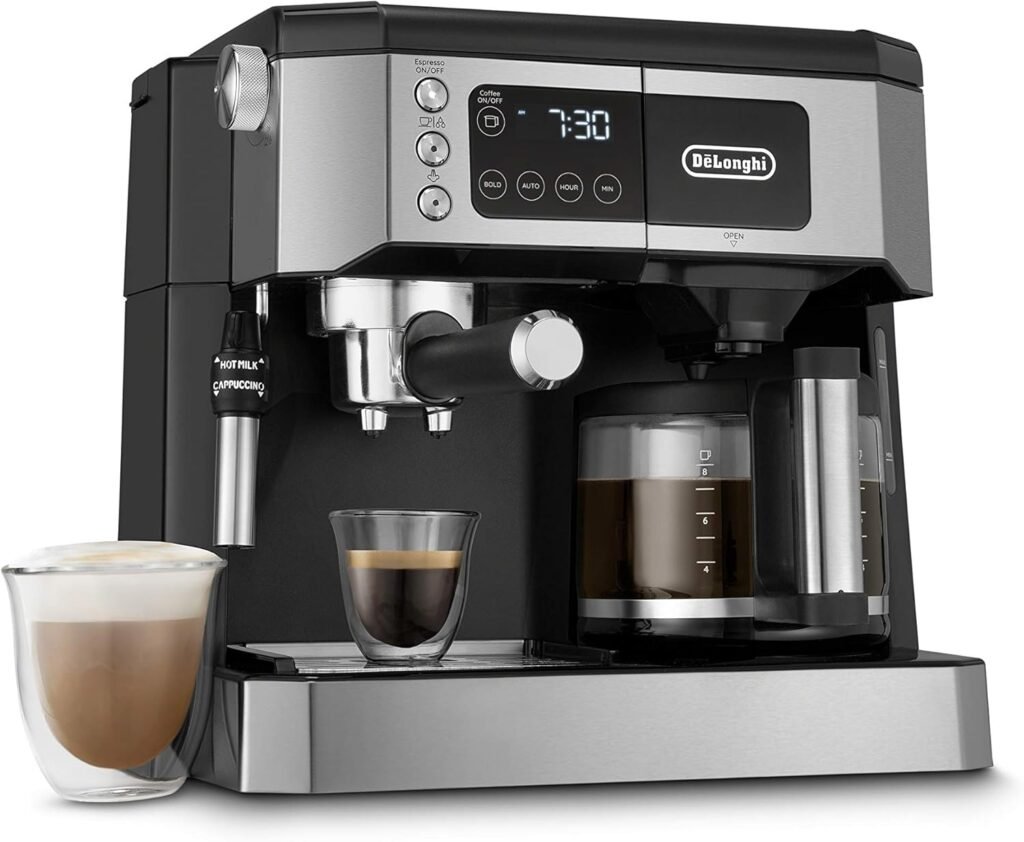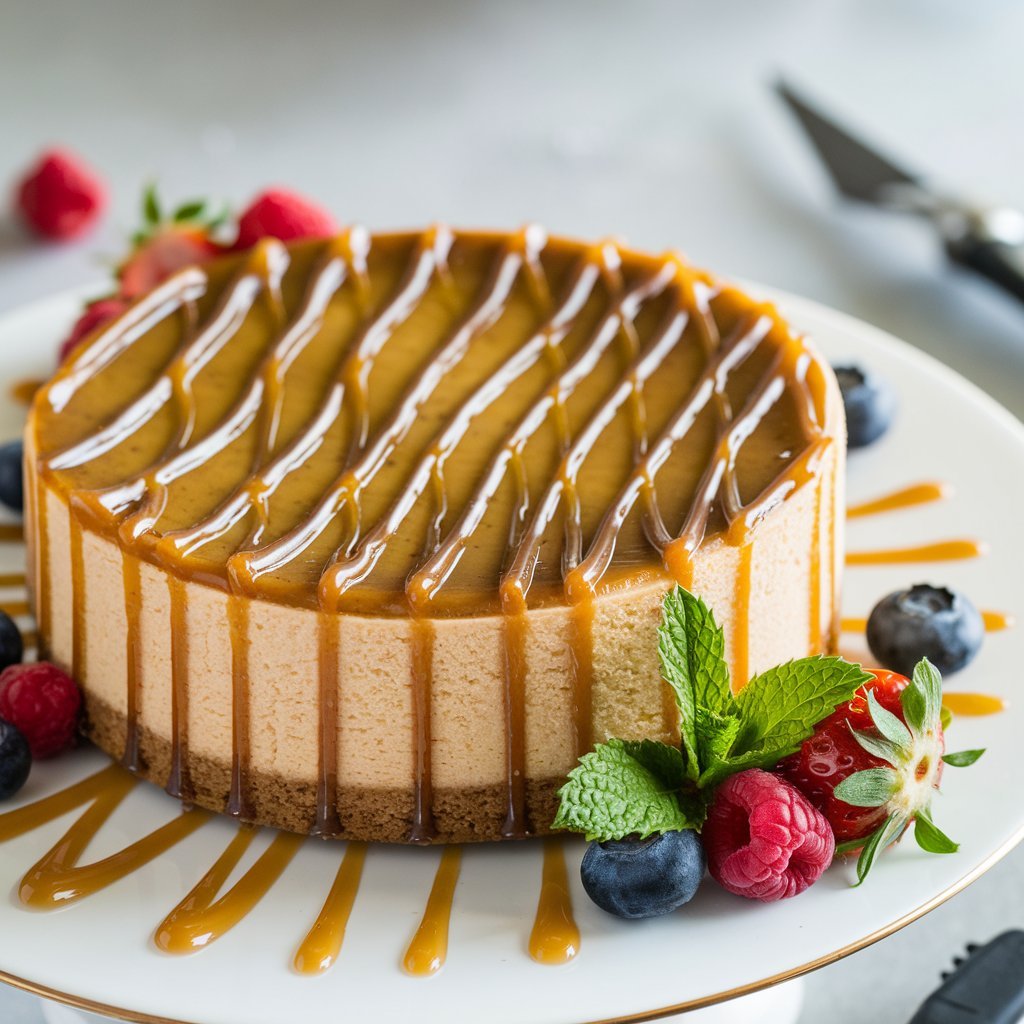Salted Caramel Cheesecake is that dessert you didn’t know you needed in your life. It’s the perfect mix of sweet and salty, creamy and smooth. Whether you’re celebrating something special or just want a treat, this cheesecake is a winner. With caramel dripping from every slice, it’s a showstopper that leaves everyone asking for more. And guess what? It’s not as hard to make as you’d think.
Key Takeaways
- Salted Caramel Cheesecake is a blend of sweet and salty flavors that everyone loves.
- Using quality cream cheese and real sea salt makes a big difference in taste.
- Homemade caramel sauce is key to achieving that deep, rich flavor.
- There are endless ways to customize your cheesecake, from adding nuts to experimenting with different crusts.
- Proper storage and serving techniques ensure your cheesecake stays fresh and delicious.
Why Salted Caramel Cheesecake is a Must-Try Dessert

The Perfect Balance of Sweet and Salty
Salted caramel cheesecake is like a flavor symphony. The combination of sweet caramel and a hint of salt creates a taste sensation that’s hard to resist. Imagine the creamy texture of the cheesecake, perfectly balanced by the sweet and salty caramel drizzle. It’s a treat that dances between indulgence and subtlety, making every bite a delightful experience.
A Decadent Treat for Special Occasions
When you want to impress at a gathering, salted caramel cheesecake is the way to go. This dessert is not just about taste; it’s about presentation too. The rich, creamy layers topped with a glossy caramel sauce make it a showstopper at any event. Whether it’s a birthday, anniversary, or holiday celebration, this cheesecake is sure to be the star of the dessert table.
How Salted Caramel Enhances Cheesecake Flavor
The magic of salted caramel lies in its ability to elevate the flavors of the cheesecake. Caramel adds a rich, buttery sweetness, while the salt cuts through the richness, adding depth and complexity. It’s like each component of the cheesecake is enhanced, creating a harmonious blend of flavors that leaves you craving more. This is why salted caramel cheesecake is not just a dessert; it’s an experience.
Essential Ingredients for the Ultimate Salted Caramel Cheesecake
Choosing the Right Cream Cheese
To start, you need to pick the right cream cheese. Full-fat, brick-style cream cheese is the way to go. The reduced-fat or spreadable types just don’t cut it. They can make your cheesecake lumpy, and nobody wants that. Let it sit out and warm up to room temperature before you mix it in, which helps avoid lumps.
The Role of Brown Sugar in Caramel Flavor
Brown sugar is your friend when making caramel. Its molasses content gives the caramel that deep, rich flavor. When you’re making the salted caramel sauce, you’ll need this to get that perfect balance of sweet and salty. Plus, it adds moisture, which is always a bonus in baking.

Why Sea Salt is a Game Changer
Now, let’s talk about sea salt. It’s not just any salt. It’s got that coarse texture and a slightly briny taste that just works wonders with caramel. When you sprinkle it on top of your cheesecake, it doesn’t just add flavor; it makes the caramel pop. A small pinch can make a big difference, turning your cheesecake from good to “wow, what is this deliciousness?”
Using quality ingredients like full-fat cream cheese, brown sugar, and sea salt can elevate your salted caramel cheesecake to a whole new level. It’s these small choices that make all the difference in taste and texture.
Step-by-Step Guide to Making Salted Caramel Cheesecake
Preparing the Caramel Sauce
Creating a luscious caramel sauce is the first step. Start by melting sugar over medium heat, stirring occasionally until it turns a golden brown. Carefully add in butter and whisk until fully combined. Slowly pour in heavy cream, and let it simmer until smooth. A pinch of sea salt at the end will give it that perfect salty-sweet balance. Let it cool while you move on to the next steps.
Crafting the Perfect Cheesecake Batter
For the cheesecake batter, you’ll need full-fat cream cheese at room temperature. This ensures a creamy texture without lumps. Beat the cream cheese until smooth, then add brown sugar, a touch of flour, and vanilla extract. Mix in sour cream for richness, and finally, incorporate the eggs one at a time. The batter should be silky and well-combined. Pour it over your prepared crust, ensuring an even spread.
Baking Tips for a Crack-Free Cheesecake
Baking a cheesecake without cracks can be tricky. Here are some tips:
- Use a water bath: Wrap the bottom of your springform pan with foil and place it in a larger pan filled with hot water.
- Avoid overmixing: Too much air in the batter can cause cracks.
- Slow and steady: Bake at a low temperature and let it cool gradually in the oven with the door ajar.
Patience is key to achieving that perfect, smooth top without any cracks.

Creative Variations of Salted Caramel Cheesecake
Incorporating Nuts for Extra Crunch
Adding nuts can bring a delightful crunch to your cheesecake. Consider folding in some chopped pecans or walnuts into the batter. Not only do they add texture, but their natural oils blend beautifully with the caramel’s richness. If you’re feeling adventurous, try toasting the nuts first to deepen their flavor.
Exploring Different Crust Options
While the classic graham cracker crust is always a hit, why not try something different? A caramel macchiato cheesecake can be a fun twist by using a coffee-flavored crust. Alternatively, an Oreo cookie crust can complement the caramel’s sweetness, or a Biscoff crust can add a hint of spice.
Adding a Chocolate Twist
For chocolate lovers, incorporating a chocolate layer can elevate your cheesecake to new heights. Try drizzling melted chocolate over the top or mixing cocoa powder into the batter. You could also layer the cheesecake with a rich chocolate ganache for an indulgent treat.
Sometimes, all it takes is a small tweak to transform a classic dessert into something extraordinary. Whether it’s adding nuts, experimenting with crusts, or introducing chocolate, each variation offers a unique take on the beloved salted caramel cheesecake.
Serving and Storing Your Salted Caramel Cheesecake
Presentation Tips for a Stunning Dessert
When it comes to serving your salted caramel cheesecake, presentation is key. A well-presented cheesecake can elevate your dessert game to the next level. Consider these tips:
- Slice with Precision: For neat slices, use a sharp knife. Run it under hot water and wipe it dry before each cut.
- Garnish Thoughtfully: A drizzle of extra caramel sauce and a sprinkle of sea salt can add that final touch of elegance.
- Plate with Care: Use a cake stand or a large platter to give your cheesecake the spotlight it deserves.
How to Store Cheesecake for Freshness
Storing your cheesecake properly is essential to maintain its taste and texture. Here’s how you can keep it fresh:
- Refrigerate Promptly: After serving, cover the cheesecake with foil or plastic wrap and store it in the fridge.
- Use the Right Container: Keep it in its springform pan if possible, as this helps protect its shape.
- Limited Shelf Life: Your cheesecake will stay fresh in the fridge for up to five days.
Freezing Cheesecake: What You Need to Know
Yes, you can freeze salted caramel cheesecake! This is a great option if you want to enjoy it later. Here’s how:
- Airtight Storage: Place the cheesecake in an airtight container to prevent it from absorbing any freezer odors.
- Long-Term Storage: It can last for several months in the freezer without losing its flavor.
- Thawing Tips: When ready to enjoy, transfer it to the fridge to thaw overnight for the best texture.
Remember, a well-stored cheesecake is just as delicious as a freshly made one. Take the time to store it properly, and you’ll be rewarded with a delightful dessert every time.
For more on keeping your cheesecake fresh and delicious, check out these salted caramel cinnamon roll cheesecake bars that also require careful storage.
Troubleshooting Common Cheesecake Issues

Preventing a Soggy Crust
A soggy crust can really ruin your cheesecake. This often happens when water from the water bath seeps into the pan. To avoid this, make sure your springform pan has a tight seal. Wrapping the outside with foil is a good precaution. Also, press the crust firmly into the pan to create a solid barrier.
Avoiding Overcooked Edges
Overcooked edges can make your cheesecake look unappetizing. This usually happens when the oven temperature is too high. Bake your cheesecake at a low temperature, ideally around 325°F, and avoid opening the oven door too often. This keeps the heat even and prevents the edges from cooking too fast.
Fixing a Runny Cheesecake Batter
A runny cheesecake batter can be a sign that something went wrong. One common issue is not using the right temperature for your oven. Always preheat your oven and use an oven thermometer to ensure it’s accurate. If your batter is too runny, it might not set properly, leading to a runny texture. Make sure to mix your ingredients just until combined to avoid adding too much air, which can also affect the texture.
Remember, patience is key when making cheesecake. Take your time with each step, and you’ll end up with a dessert that’s not only delicious but also a feast for the eyes.
Wrapping It Up
So there you have it, the ultimate salted caramel cheesecake that’s sure to win over anyone who takes a bite. It’s not just a dessert; it’s an experience, with layers of creamy goodness and that irresistible caramel flavor. Whether you’re making it for a special occasion or just because, this cheesecake is bound to impress. Remember, the key is in the details, so take your time and enjoy the process. Once you’ve mastered this recipe, you’ll have a show-stopping dessert that’s perfect for any gathering. Happy baking!
Frequently Asked Questions
Can I freeze salted caramel cheesecake?
Yes, you can freeze it! Just make sure to put it in a container that keeps air out so it stays fresh and doesn’t take on any freezer smells. It can last for a few months this way.
How do I keep my cheesecake from cracking?
To avoid cracks, don’t overmix the batter and bake it slowly. Letting it cool down gradually in the oven with the door open can also help.
What type of crust works best for salted caramel cheesecake?
A graham cracker crust is popular, but you can also try crushed cookies like Biscoff or gingersnaps for extra flavor.
Is there a substitute for sour cream in cheesecake?
Yes, you can use plain Greek yogurt if you don’t have sour cream. It will still give a creamy texture.
How long should I chill the cheesecake before serving?
It’s best to chill the cheesecake for at least 4 hours, but overnight is even better for the best texture and flavor.
Can I make salted caramel cheesecake ahead of time?
Absolutely! Cheesecakes can be made a few days in advance and stored in the fridge until you’re ready to serve.


